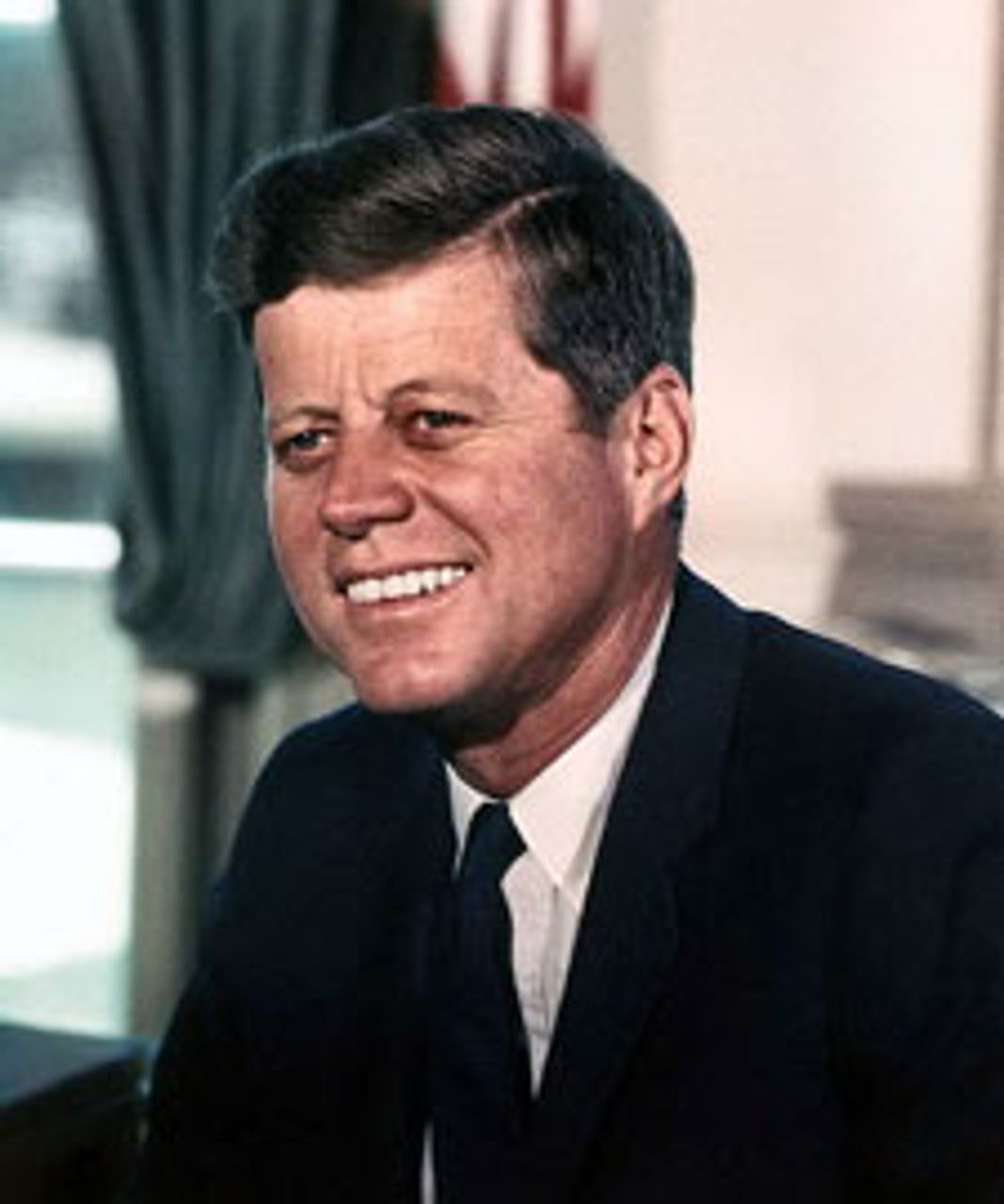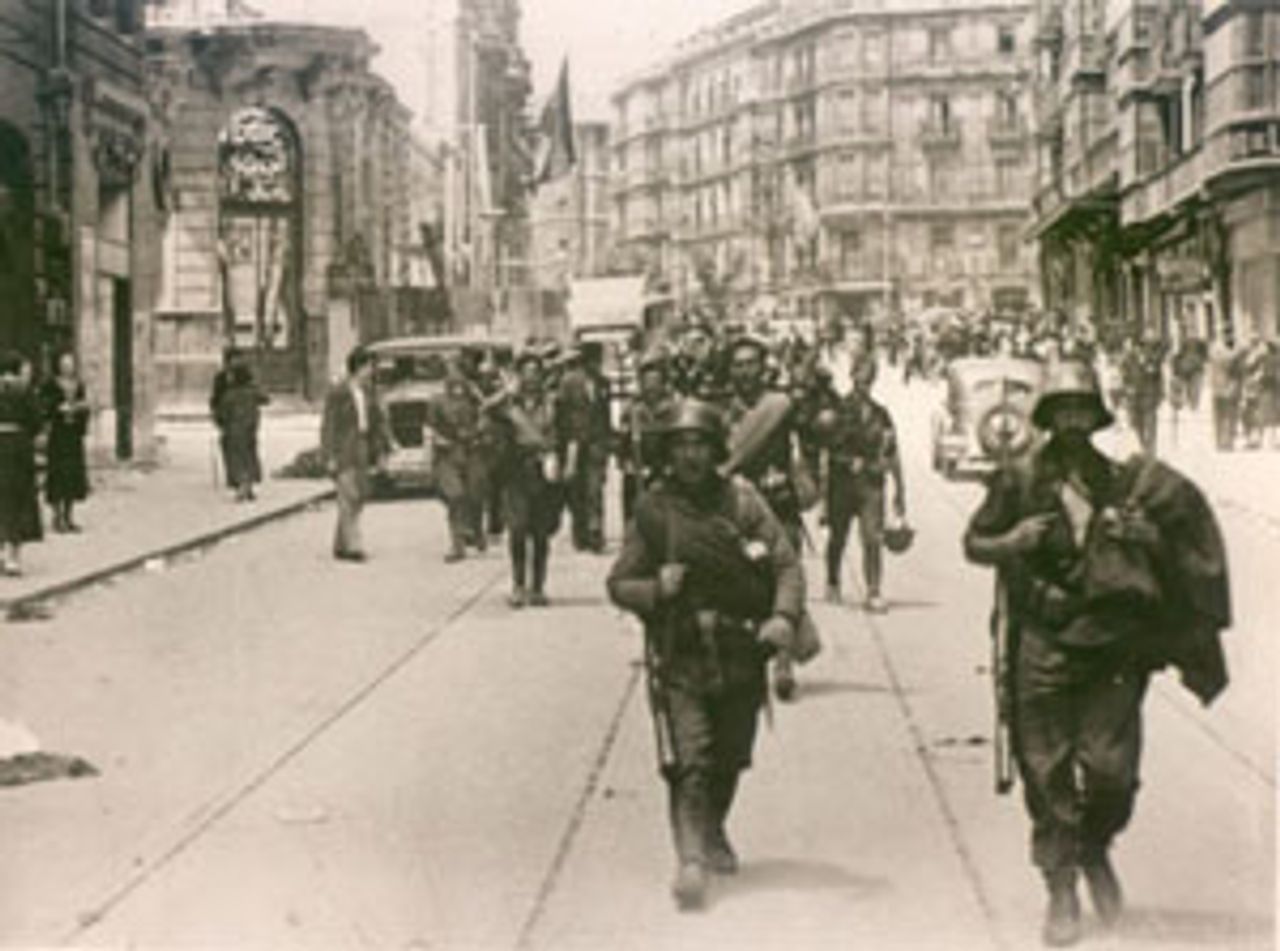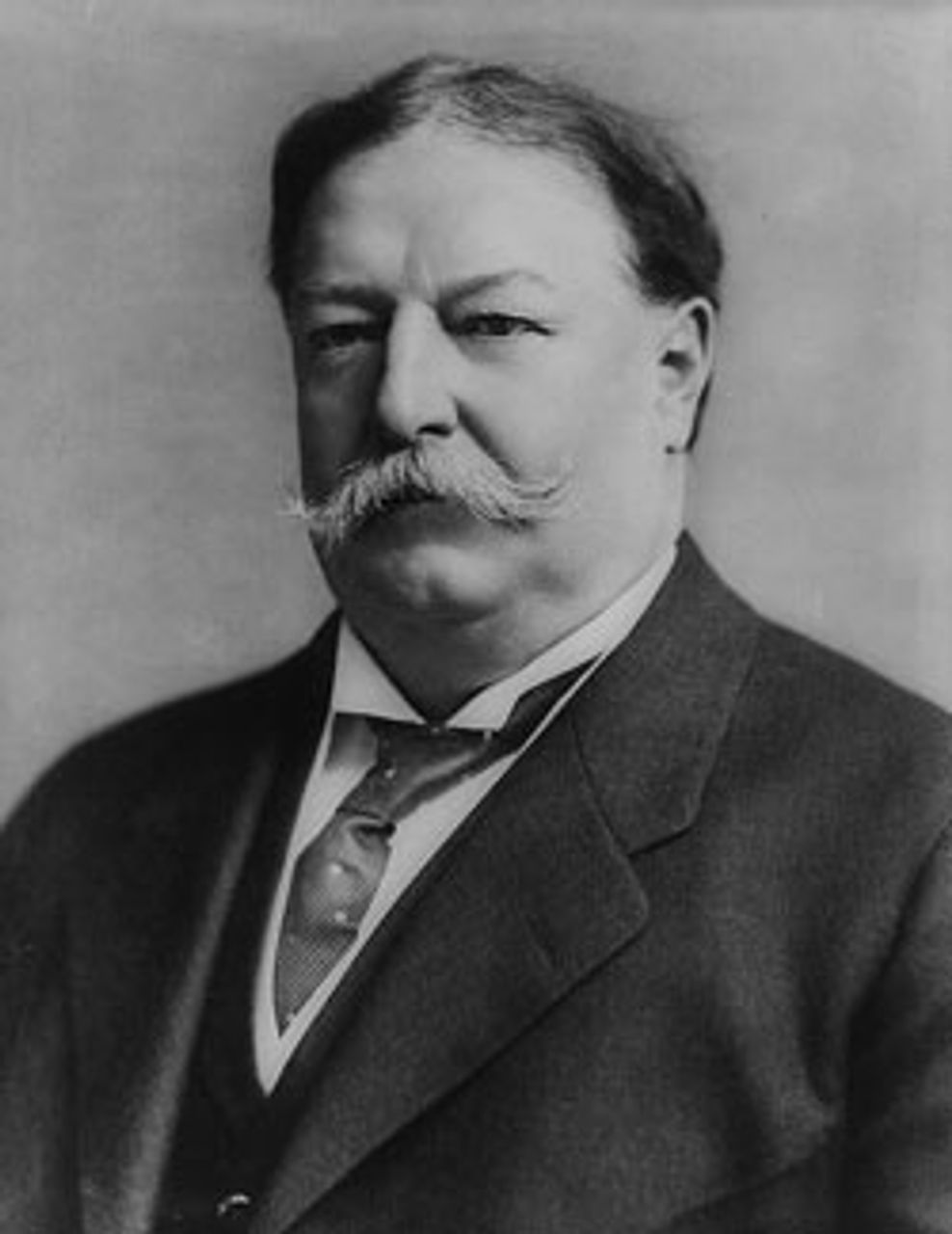This Week in History provides brief synopses of important historical events whose anniversaries fall this week.
25 Years Ago | 50 Years Ago | 75 Years Ago | 100 Years Ago
25 years ago: US and Soviet scientists announce joint study of ozone layer
 Ozone hole over Antarctica
Ozone hole over AntarcticaOn June 19, 1987 the US National Oceanic and Atmospheric Administration (NOAA) and its counterpart in the Soviet Union announced a cooperative effort to study the hole in the ozone layer recently discovered over the continent of Antarctica. An agreement was reached to share data acquired by both ground and rocket-based measurements from the Soviet Molodezhnaya station and US polar-orbiting satellites.
The hole in the ozone layer, an atmospheric stratum with relatively high concentration of ozone (O3) compared to oxygen (O2), was discovered in 1985. This layer absorbs up to 99 percent of the sun’s harmful ultraviolet light. The hole began appearing over Antarctica every spring, during the months of September and October, closing again in winter, but growing in size every year.
Since 1978, the depletion of ozone in the atmosphere became a topic of intense discussion among scientists. Earlier in the year, a US congressional hearing was told that cancerous melanomas had increased at the epidemic rate of 700 percent over the previous seven years. A New York University study had predicted that the odds of contracting skin cancer, at the time 1 in 135, would increase to 1 in 90 by the year 2000 and to 1 in 3 by the 2075. The US Environmental Protection Agency estimated in 1986 that by the year 2075 the depletion of the ozone layer would result in 800,000 deaths from skin cancer.
Even though the use of chlorofluorocarbons in aerosol sprays, suspected by scientists as a key cause of ozone breakdown, was banned in 1978 in the US, the chemicals were still produced for refrigerants and other uses throughout the world. The exact causes of ozone depletion were disputed by authorities, so the US-Soviet collaboration was proposed ostensibly to develop knowledge which could lead to implementing measures to reverse the problem.
The daily record of the Antarctic ozone hole has been kept since the study began. The hole has been increasing since then, reaching its most recent peak in 2006. Animations of the ozone hole from 1979 on are available at the ozonewatch web site hosted by NASA.
50 years ago: Kennedy denounces airline strike
 Kennedy
KennedyOn June 23, for the second time in as many weeks, US President John Kennedy denounced the decision of airline engineers to go on strike, calling their walkout, which began the same day, “the height of irresponsibility.”
The Flight Engineers International Association (FEIA) was on strike against Eastern Air Lines and Pan American World Airways, but Kennedy did not criticize either company. Union President Ronald Brown defied the White House, responding to Kennedy by calling the walkout “perfectly legal” and stating that the union “would not abdicate its right to strike.”
Kennedy was attempting to appeal to more conservative elements in the union bureaucracy both in relationship to the strike against Eastern and Pan Am, and in order to influence the outcome of a tentative settlement brokered days earlier by Secretary of Labor Arthur Goldberg between the FEIA and TWA (Trans World Airlines). The TWA deal, which would reduce cockpit crews from four to three, had not yet been approved by the rank-and-file. Members of the FEIA had carried out a wildcat strike in 1961.
The FEIA stood to lose membership via technological change, replacing cockpit flight engineers. This favored the rival craft organization for pilots, the Air Line Pilots Association (ALPA), which stood aside in the labor struggle between the FEIA and the airlines.
75 years ago: Bilbao betrayed, falls to Franco
 Fascist troops march into Bilbao
Fascist troops march into BilbaoThe city of Bilbao, one of the main industrial centers of Spain, fell to the fascist military forces of General Francisco Franco on June 19, 1937. A week earlier Republican forces had fallen back within the city’s boundaries when the line of defense known as Bilbao’s “iron ring” was breached by Nationalist troops. On June 18, General Ulibarri pulled out the remaining Republican soldiers.
Bilbao and its surrounding industrial towns and coal and iron mines of the Basque region formed an important industrial center with a large and militant working class. However, the Basque ruling class, hand in hand with the Stalinists of the Spanish Communist Party, failed to develop a plan to withstand a Nationalist siege such as that implemented in Madrid, and the Republican government failed to send reinforcements to defend Bilbao until mid-June when the fate of the city was already sealed.
Hours prior to the entry of Nationalist forces into the city, militiamen who had previously served in the regular Spanish army disarmed the Asturian and Santander Republican militias, dismantled their barricades, and drove them from Bilbao. They also released fascist prisoners. The Minister of Justice in the Basque government, Leisola, remained to supervise the betrayal.
The local bourgeoisie sought to leave behind undamaged industry and urban infrastructure to return to once they had reached an agreement with Franco. Consequently the city of Bilbao was delivered more or less intact to Spanish fascism.
In his book Revolution and Counter Revolution in Spain, Felix Morrow describes how the keys to the city were handed over to the Nationalist army: “It is an elementary axiom of military science that no large city can be captured until its massive buildings—veritable fortifications—have been razed to the point they offer no further protection to beleaguered troops. The process of razing buildings by shelling and bombing required enormous equipment such as the Fascists did not have.” Morrow adds: “But the bourgeoisie did not wait for the shelling of Bilbao at all! On June 19 they surrendered the city, as they had San Sebastian the previous September. The uniform Basque policy of giving up cities intact has no parallel in any modern war, let alone a civil war!”
100 years ago: Taft wins Republican nomination
 Willam Howard Taft
Willam Howard TaftThis week in June, 1912, the Republican Party’s national convention nominated incumbent president William Howard Taft for re-election in the 1912 presidential election. The convention, which ran from June 18 to June 22, was dominated by the political conflict between Taft and former president Theodore Roosevelt, which ultimately led to a split in the party.
Roosevelt won the overwhelming majority of the primaries, claiming victory in nine out of twelve states. However, delegates from thirty-six states were selected by state conventions, which were controlled by the party apparatus. Many of the delegates from these states were contested, but Taft’s control of the Republican National Committee, which adjudicated disputed delegates, ensured his victory. The committee awarded 235 contested delegates to Taft, and just 19 to Roosevelt. In response, Roosevelt advised his delegates to abstain from voting. Roosevelt and his supporters split from the Republican Party, forming the Progressive (or Bull Moose) Party.
In the 1908 election, Roosevelt had supported Taft as his successor to the leadership of the Republican Party, and the presidency. Roosevelt grew increasingly dissatisfied with Taft over his close ties to the conservative wing of the Republican Party, his acceptance of higher tariffs, and prosecution of a “trust busting” case against US Steel, a trust which Roosevelt had exempted from anti-trust prosecution during his presidency.
Both Taft and Roosevelt were identified as “progressives” in the Republican Party. As a political tendency, Progressivism argued that the danger of socialism could be averted through reforms to the worst excesses of capitalism. Progressive politicians demagogically denounced the major trusts, which were viewed with hostility by broad sections of the population, but stressed that their aim was not to expropriate the corporations but to alter their practices.
The party platform of Roosevelt’s Progressive Party was typical of progressive rhetoric. It declared: “To destroy this invisible Government, to dissolve the unholy alliance between corrupt business and corrupt politics is the first task of the statesmanship of the day.”
The split in the Republican Party contributed to Taft’s defeat by Woodrow Wilson in the 1912 presidential election. Wilson would become only the second Democrat to win the White House since 1860.
